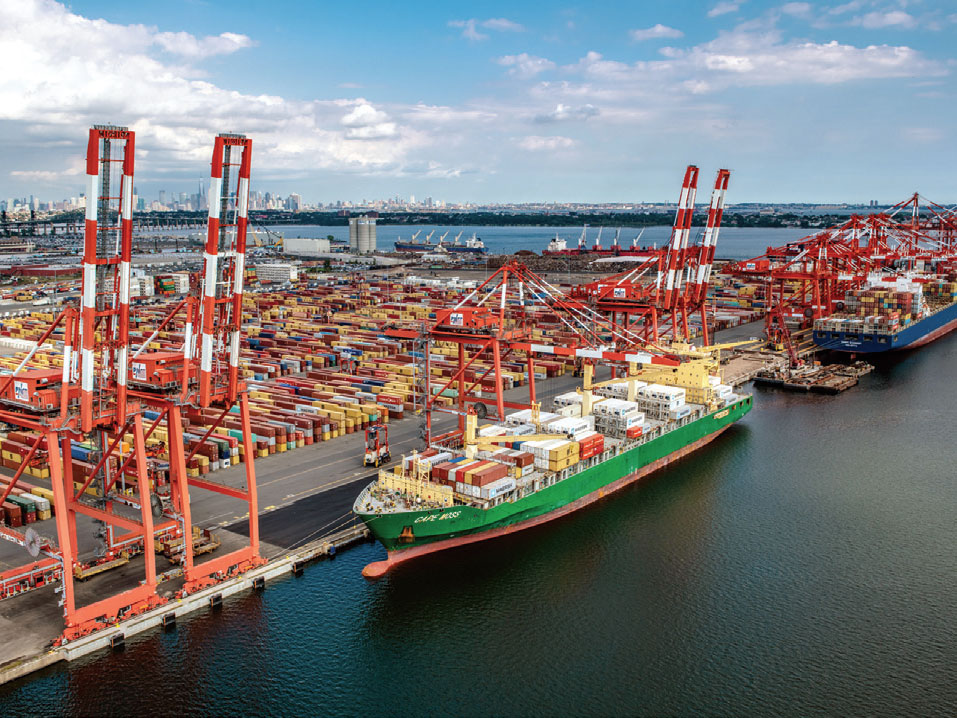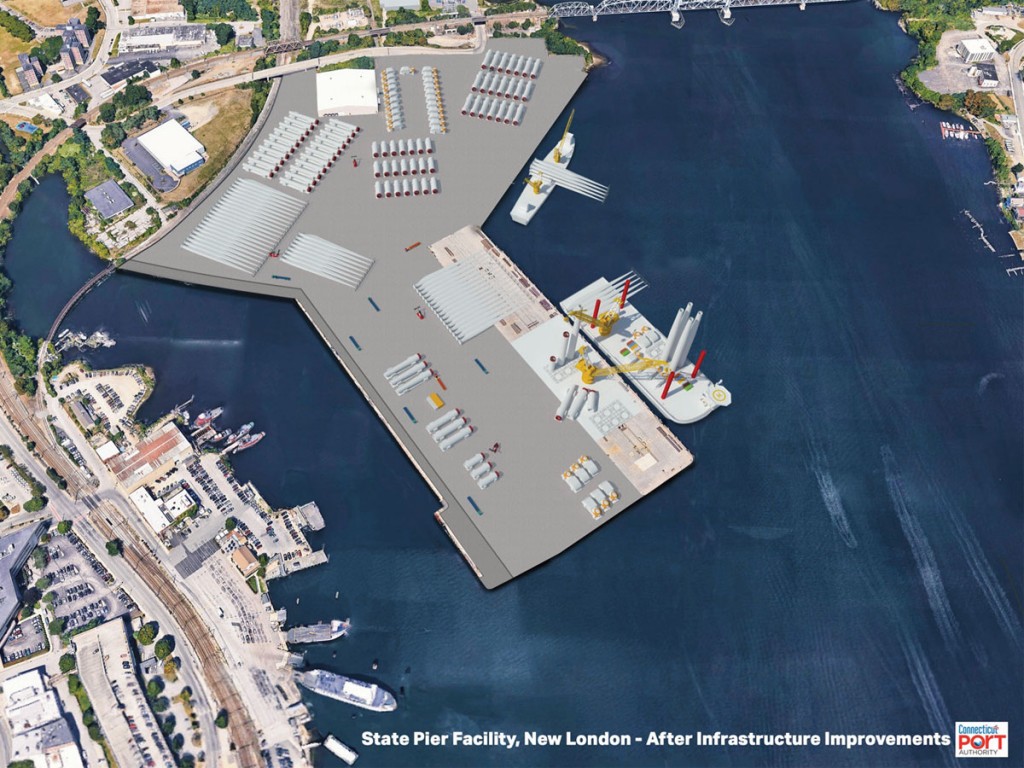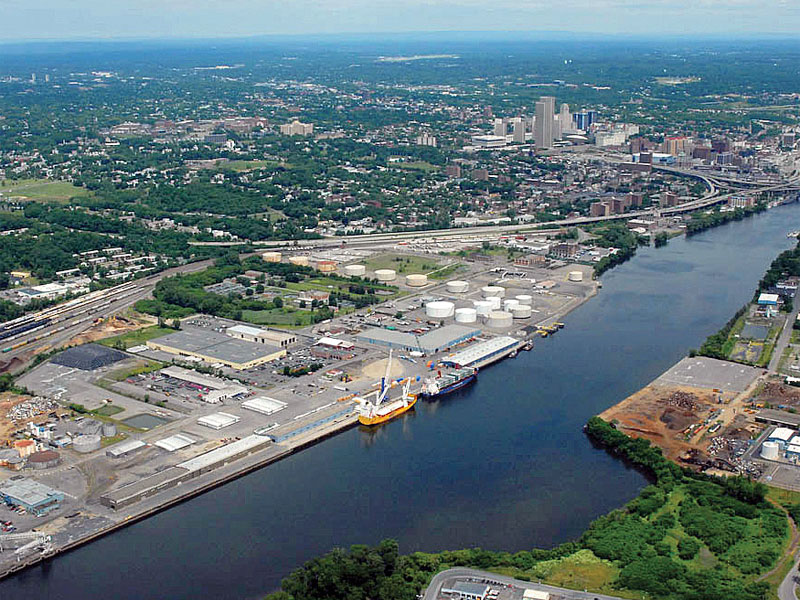The Northeast Corridor of the United States, running from Maine to Washington DC with a population of over 56 million and a GDP of approximately $5 trillion, is the largest economic region on the planet. To put the numbers in a global perspective, the Northeast region has a GDP slightly larger than Germany – the world’s fourth largest economy. It’s been described as the first “Megalopolis” referring to the almost contiguous swath of cities.
New York City is the economic heart of this modern megalopolis. The metropolitan New York region is home to over a thousand-corporate headquarters including 52 fortune 500 companies. In normal times, NYC’s economic activity radiates throughout the Northeast and beyond. The financial whirring of the wheels of Wall Street, and the throb of Times Square – the buzz of the vast network of restaurants and retailers large and small, ripples out from the Manhattan epicenter of this massive economic spread.
There are also numerous satellite cities that are regional economic engines in their own right. Boston, MA, the “Hub” of New England, Philadelphia, PA, Baltimore, MD, Hartford, CT, Providence, RI, Portland, ME, Albany, NY, Newark, NJ and Washington DC, just to name a few.

But these days are far from normal. The concrete canyons of New York are quiet as the City is the epicenter, not of trade and finance but of the Covid-19 pandemic. The seriousness of Covid-19 hit home on March 9th when it was announced Rick Cotton, Executive Director of the Port Authority of New York and New Jersey (PANYNJ) had tested positive for the Coronavirus. With “shelter-in-place” orders in virtually every State [and Canada as well] in the Northeast Corridor, Dow Jones is down, business is muted, unemployment is reaching new highs, and international trade has slowed to a trickle. The world’s intricate supply chains are twisted and knotted in ways we haven’t seen since the Great Recession of 2009. Covid-19 is arguably a greater challenge in all manner to NYC, the Northeast Corridor and the nation than even the tragedy of 9/11.
But in the words of an ancient Persian adage, “This too will pass”. How long it will take to recover both physically and economically is difficult to determine at this juncture. But the gears of industry are still turning, albeit much slower. And as before, there is a great deal of pent up demand that at some point will be unleashed and another “new normal” will emerge.
To a large degree the seeds of the recovery have already been planted and can be seen in the planning already underway by various ports and other entities in the Northeast Corridor.
New England – Prospects in Offshore Wind
For New England, this muted Spring has slowed but plans are still being developed, although with fewer direct meetings and more video conferencing and conference calls.
For example, in Portland, Maine, it was announced that a waterfront cold-storage facility is once again on the to do list for the Port. In late February, Icelandic-owned Eimskip USA, Yarmouth, Maine based Treadwell Franklin Infrastructure and U.K.-based Amber Infrastructure filed plans with the City’s planning board to build a cold storage facility, named “the Maine International Cold Storage Facility” in the application.
The Port interests have long sought a waterfront cold storage facility to serve the station for the seafood, blueberries and potatoes and other perishable exports. Back in 2017 it was expected that Americold would build the facility but the company pulled out of the project in June of 2018.
Under the reported terms, Treadwell Franklin and Amber would lease the land from the Maine Port Authority for 30-years with two 10-year extensions. According to press reports, the Port is targeting annual compensation of about $ 500,000 depending on cargo volumes. The finished facility will encompass 120,000 sq. ft., with a maximum height of 75 feet, 12 loading dock bays and space for 20,000 pallets.
The Port of Searsport Maine, is also vying for a slice of the wind business. The Sprague facility has two wharves with one handling liquid bulk (largely for the power plant) and the other dry bulk/breakbulk. Maine Aqua Ventus, which is vying to deploy the first floating offshore wind power facility, wants to use Searsport to assemble the hull which would be towed to the Monhegan Island test site. The project is a collaboration between Cianbro Corp. and the University of Maine and the Advanced Composites Center. If successful, the project could open up large offshore tracts of the East Coast to wind generation.
Ports, large and small, throughout the Northeast are all looking at the promise of wind power – both landside and offshore - as a potentially trillion-dollar industry which will have a transforming impact. In May of 2019 the Port of Portsmouth New Hampshire, [part of the Pease International Tradeport] handled its first shipment (second shipment overall) of wind power components – sections of eight wind turbines – destined for a wind farm being constructed in Antrim, New Hampshire. In 2018 the Port of Portsmouth was awarded $7.5 million federal grant (which gave the Port a war chest of $12.5 million) to rehabilitate the main wharf at the Market Street Terminal which is scheduled for completion in 2021. But with the new pier, the Port has been angling for new breakbulk/project work like the Antrim wind farm project.
The New England port that is already established in the offshore wind power sector is the Port of Davisville, RI located within the Quonset Development Corp business park. The Port of Davisville, although not well-known nationally because of the country’s container-centric port view, is nonetheless one of the most successful autoports in the nation – consistently ranking in the top ten.
The Port of Davisville, which has been called the “biggest, small port in the US,” had a banner year in 2019. The Port posted a new record of 338,447 automobiles imported by ship, rail or truck as compared with the previous record of 280,387 in 2018. Additionally, Quonset saw 185,083 sq. ft. of space leased throughout the park. But as important as the auto industry is to the Port, the Port is ramping up to handle more offshore and onshore wind power project freight as well. The Port of Davisville established itself as the staging area for Deepwater Wind’s Block Island offshore 30-megawatt wind farm – the first in the country. A bond referendum was overwhelmingly approved by voters and the “Pier 2 project” was started which included construction of a new steel bulkhead for the north, south and east faces of the pier, dredging Narragansett Bay to accommodate larger ships, and extending Pier 2 by 232 feet to the north – creating a third berthing space at the port for unloading cars and other cargo.
Last year, Deepwater Wind was bought by Ørsted for $510 million and the company has proposed building a 400-megawatt wind farm in Rhode Island Sound.
With a potential boom in wind power on the horizon and the ever-increasing auto business, RI Governor Gina Raimondo in her proposed budget included $20 million for upgrading the Port of Davisville. According to Steven King, Quonset’s managing director, the “$20 million bond measure will be used to finance part of the Port Master Plan, creating the capacity for increased offshore wind logistics and staging while maintaining the infrastructure to continue the booming international auto import business.”
Rhode Island isn’t the only New England state pushing their chips into the center of the table on the promise of offshore wind power. Neighboring Connecticut is making a major investment in the Port of New London to transform the Port into a major staging site for offshore (and potentially onshore) wind power business. Last year, Gateway Terminal, which operates the terminals in the Port of New Haven, was picked by the Connecticut Port Authority (CPA) to run the New London facility – outbidding the Montreal-based company Logistec which had run the terminal for 22-years.

In February, Governor Ned Lamont announced the State of Connecticut (through the CPA) and Gateway Terminal, Ørsted, and Eversource had reached a final agreement on a harbor development plan for State Pier in New London.
The CPA, the state’s quasi-public agency responsible for promoting and coordinating the development of the state’s ports and maritime industry, along with terminal operator Gateway Terminal, and joint venture partners Ørsted and Eversource notched an agreement to redevelop New London’s State Pier into a state-of-the-art port facility through a combined public-private investment of $157 million.
Andrew Lavigne in an interview with the AJOT noted, “We [CPA] are in the very early stages of a two-year construction process…and to date, there are no changes to the construction as a result of this new landscape we find ourselves in.”
The first phase of construction is designed to complete the facility infrastructure upgrades to meet the heavy-lift requirements of Ørsted and Eversource’s offshore wind components. This will begin in early 2021 and continue through August 2022. The CPA will oversee the project while working closely and in collaboration with Ørsted and Eversource throughout the permitting and construction process. Permitting and site investigations have been underway since 2019, and the contractor selection process will begin in late 2020. Barry Whelan, chief commercial officer, in a telephone interview with AJOT said, all cargo has been removed from the port adding, “Ships are no longer coming to New London…and as a terminal operator, we [Gateway Terminals] are waiting for the port to reopen after two years.”
When the infrastructure upgrade project is complete, the Ørsted and Eversource joint venture company will enter into a ten-year lease agreement, which will allow it to use State Pier for wind turbine generator pre-assembly and staging to power their Revolution Wind, Sunrise Wind, and South Fork Wind projects – projects totaling more than 1,700 megawatts.
The CPA also inked a recent deal with New England Central Railroad, Inc. (NECR), a subsidiary of Connecticut-based Genesee & Wyoming Inc., a five-acre parcel to enable the handling of wind turbine components when the wind power business gets up and running.
Another port positioning itself for a slice of the offshore (and potentially onshore) wind power is the Port of Albany, New York. Rich Hendrick, general manager at the Port explained to the AJOT, that the Port has been doing well in the early months of 2020 with some business coming from unexpected quarters. Hendrick said in the first quarter “the number of ships have just about doubled and man-hours have been good.” For example, the Port handled two scrap metal ships destined for Turkey…and metal scrap loading is man-hour intensive. Hendrick said, “For years we’ve lived off heavy lift and project cargo but it’s a slow market.” Because of the Covid-19 pandemic, the demand for toilet paper and personal care products has boomed and the Port has been sending “truckloads nonstop” and even railcars full of wood pulp to processing plants. The Port has also been used for staging for the construction of a 750,000 sq. ft. pharmaceutical warehouse. The US-made steel was delivered by rail to the Port and later shipped to the construction site. The Port is also sending out for construction bid a 60,000 sq. ft. warehouse project – the Port has been working on the design for the last nine months and hopes to complete the project in 2020. The Port is also resurfacing the marine terminal which will make it capable of handling heavy trucks.

Which leads up to the big news for the Port of Albany. “Two years ago we purchased 80 acres of land on the water just south of the existing terminal and we are looking at developing that as an offshore wind manufacturing site,” Hendrick said. The Port has been talking with a number of potential wind power manufacturers but has non-disclosure agreements in place. Hendrick noted that the Port is waiting on the generic environmental statement (GES) to be approved by the town of Bethlehem. If the approvals are expedient, then the Port hopes to move on the project in the Fall and start construction by the end of 2020.




